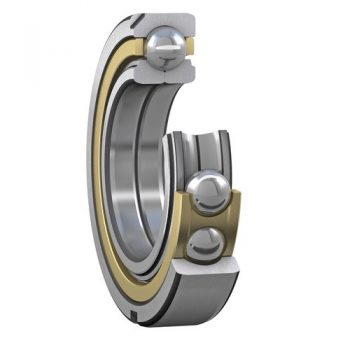Four Point Contact Ball Bearings

Four-point contact ball bearings make it easy to streamline system designs that have a radial, thrust and moment load mix so all three can be done simultaneously. They are mostly used for applications that are slow to moderate-speed, or where oscillatory motion is prevalent.
A single four-point contact bearing usually makes a second bearing unnecessary, which offer a variety of benefits, including space, weight and cost savings. It is easier to build, more detailed and requires less upkeep. A four-point contact bearing can handle radial, thrust and moment loads independently or in any combination, since its special ball path geometry creates twice as many contact points. For an inner race and an outer race, it has one row of balls.
Similarly, having a single bearing means no runout matching, no diameter matching, and no chance of wobble from two bearings with unequal runout. All of this enhances the accuracy of the assembly. In contrast, a four-point contact ball bearing is manufactured with the proper internal fit and is simply fastened to its mating parts.
Finally, eliminating a second bearing saves money that can be used to integrate features (gears, mounting holes, lubrication fittings) into the four-point contact bearing to further optimize performance.
Features & Benefits
- Accommodates axial loads in both directions
- Less axial space: Four-point contact bearings are single-row angular contact ball bearings and therefore require significantly less space in an axial direction than double-row designs
- High load carrying capacity: A large number of balls are incorporated, giving the bearing its high load carrying capacity.
- Separable design: The split inner ring leads to easier mounting and dismounting of the bearing.
- Improved oil flow
- Limited inner ring deformation when subjected to high clamping forces
Applications
- Agricultural machinery;
- Earth moving machinery;
pumps; - Industrial machinery for cleaning and bottling;
- Electric motors;
- Fitness machines;
- Machining equipment (steel, glass, marble, wood,);
- Automatic opening systems;